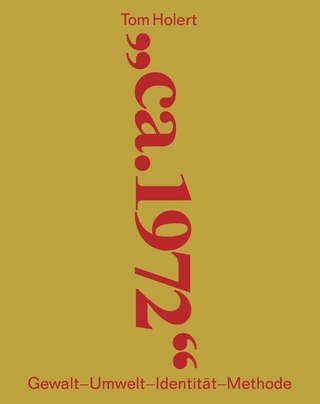
A People's Music
Jazz in East Germany, 1945–1990
Seiten
2019
Cambridge University Press (Verlag)
978-1-108-48618-7 (ISBN)
Cambridge University Press (Verlag)
978-1-108-48618-7 (ISBN)
This first full history of jazz over the lifespan of East Germany, from 1945 to 1990, draws on previously unexamined sources and vivid eyewitness accounts to reveal the experiences of jazz musicians and fans, and the surprising ways state policies sought to manage and control jazz during the cultural Cold War.
A People's Music presents the first full history of jazz in East Germany, drawing on new and previously unexamined sources and vivid eyewitness accounts. Helma Kaldewey chronicles the experiences of jazz musicians, fans, and advocates, and charts the numerous policies state socialism issued to manage this dynamic art form. Offering a radical revision of scholarly views of jazz as a musical genre of dissent, this vivid and authoritative study marks developments in the production, performance, and reception of jazz decade by decade, from the GDR's beginning in the 1940s to its end in 1990, examining how members of the jazz scene were engaged with (and were sometimes complicit with) state officials and agencies throughout the Cold War. From postwar rebuilding, to Stalinism and partition, to détente, Ostpolitik, and glasnost, and finally to its acceptance as a national art form, Kaldewey reveals just how many lives jazz has lived.
A People's Music presents the first full history of jazz in East Germany, drawing on new and previously unexamined sources and vivid eyewitness accounts. Helma Kaldewey chronicles the experiences of jazz musicians, fans, and advocates, and charts the numerous policies state socialism issued to manage this dynamic art form. Offering a radical revision of scholarly views of jazz as a musical genre of dissent, this vivid and authoritative study marks developments in the production, performance, and reception of jazz decade by decade, from the GDR's beginning in the 1940s to its end in 1990, examining how members of the jazz scene were engaged with (and were sometimes complicit with) state officials and agencies throughout the Cold War. From postwar rebuilding, to Stalinism and partition, to détente, Ostpolitik, and glasnost, and finally to its acceptance as a national art form, Kaldewey reveals just how many lives jazz has lived.
Helma Kaldewey received her Ph.D. from Tulane University, Louisiana. She is a musicologist, longtime teacher and researcher in the history of jazz. She has written and produced films about New Orleans' music culture in partnership with German public media.
List of figures; Selected chronology; List of abbreviations; Introduction; 1. Jazz in Weimar and Nazi Germany, 1918–1945; 2. Jazz in the Soviet Zone, 1945–1949; 3. Jazz in the founding years of the GDR, 1949–1961; 4. Jazz behind the wall, 1961–1971; 5. The rise of new jazz, 1971–1979; 6. 'A national treasure': jazz made in the GDR, 1980–1990; Archival sources; Appendix; Bibliography; Index.
| Erscheinungsdatum | 22.01.2020 |
|---|---|
| Reihe/Serie | New Studies in European History |
| Zusatzinfo | Worked examples or Exercises; 50 Halftones, black and white |
| Verlagsort | Cambridge |
| Sprache | englisch |
| Maße | 159 x 234 mm |
| Gewicht | 670 g |
| Themenwelt | Kunst / Musik / Theater ► Musik ► Jazz / Blues |
| Geschichte ► Allgemeine Geschichte ► Zeitgeschichte | |
| Geisteswissenschaften ► Geschichte ► Regional- / Ländergeschichte | |
| Geschichte ► Teilgebiete der Geschichte ► Kulturgeschichte | |
| ISBN-10 | 1-108-48618-5 / 1108486185 |
| ISBN-13 | 978-1-108-48618-7 / 9781108486187 |
| Zustand | Neuware |
| Haben Sie eine Frage zum Produkt? |
Mehr entdecken
aus dem Bereich
aus dem Bereich
Gewalt, Umwelt, Identität, Methode
Buch | Softcover (2024)
Spector Books OHG (Verlag)
36,00 €
wie Freud im Kollektiv verschwand
Buch | Hardcover (2024)
Klett-Cotta (Verlag)
25,00 €


